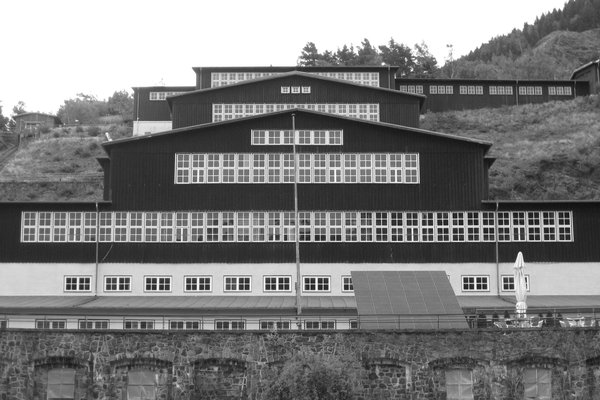Germany
Rammelsberg and Goslar
The Mines of Rammelsberg, Historic Town of Goslar and Upper Harz Water Management System constitute of one of the largest mining and metallurgical complexes for non-ferrous metals in Europe.
The Rammelsberg mining complex has an over 1,000 years long, continuous history of mining and metal production. The technological ensemble includes both surface and underground remains, including those for the management of water for drainage and power. The nearby town of Goslar achieved great prosperity in the late Middle Ages thanks to the revenues from mining, metal production and trade. It also played an important role in the Hanseatic League.
Community Perspective: Ian enjoyed a Christmassy Goslar, while Hubert has focused his review on the later addition of the Upper Harz Water Management system. The Rammelsberg mines can be visited by guided tours, of which Kbecq took two.
Site Info
Official Information
- Full Name
- Mines of Rammelsberg, Historic Town of Goslar and Upper Harz Water Management System (ID: 623)
- Country
- Germany
- Status
-
Inscribed 1992
Site history
History of Rammelsberg and Goslar
- 2010: Extended
- To include the Upper Harz Water Management System
- 2010: Name change
- From "Rammelsberg mines and the historic town of Goslar" (name before the extension)
- 1992: Inscribed
- Inscribed
- Type
- Cultural
- Criteria
- i
- ii
- iii
- iv
Links
- UNESCO
- whc.unesco.org
- Official
-
- harzwasserwerke.de — Oberharz Water Management
- goslar.de — Goslar
- rammelsberg.de — Rammelsberg Mine
All Links
UNESCO.org
- whc.unesco.org — whc.unesco.org/
Official Website
- harzwasserwerke.de — Oberharz Water Management
- goslar.de — Goslar
- rammelsberg.de — Rammelsberg Mine
News Article
- July 28, 2017 n-tv.de — Floods in Goslar
- Dec. 5, 2009 cellesche-zeitung.de — Monuments in Goslar and Rammelsberg to be renovated for 9.4 million EUR
Community Information
- Community Category
- Urban landscape: Medieval European
- Secular structure: Mines
Travel Information
Guided Tour Only
Harz Hotspot
Hamburg Hotspot
Recent Connections
-
Perfect Inscriptions
1992 -
Frederick Barbarossa
"Between 1152 and 1188, the Imperial Pa… -
Guided Tour Only
The Rammelsberg Mines can only be visit…
Connections of Rammelsberg and Goslar
- Individual People
-
-
Charles V
Walkenried: "In view of the Protestant Reformation the abbey was finally declared an immediate Reichsstift (Imperial abbey) by Emperor Charles V in 1542."See en.wikipedia.org
-
Goethe
Goslar among others in his Harz Journey -
Frederick II
"In July 1219 Frederick II held an Imperial Diet (German Reichstag) at the Imperial Palace and on that occasion received the Imperial Regalia, that Otto IV had kept at the Harzburg."See en.wikipedia.org
-
Frederick Barbarossa
"Between 1152 and 1188, the Imperial Palace was at times both the venue for, and at times the cause of, the dispute between Emperor Frederick I and Duke Henry the Lion." An equestrian statue of Frederick I stands in front of the Palace. (wiki)See en.wikipedia.org
-
- Trivia
-
-
Hotels in Historic Buildings
Novum Hotel KaiserworthSee de.wikipedia.org
-
Fatal Accidents or 'disasters'
"A mining accident is documented in 1376, when more than 100 miners were buried and killed."See en.wikipedia.org
-
Dubbed as another WHS
Goslar: Nordic Rome
-
- History
-
-
Hanseatic League
"Located close to the Rammelsberg mines, the town of Goslar played an important part in the Hanseatic League because of the richness of the Rammelsberg metal-ore veins." (Official description) -
Sieges and Battles
"After his election in 1152, King Frederick appointed the Welf duke Henry the Lion Imperial Vogt (bailiff) of the Goslar mines; nevertheless, the dissatisfied duke besieged the town and at an 1173 meeting in Chiavenna demanded his enfeoffment with the estates in turn for his support on Barbarossa's Italian campaigns. (...) During the German throne dispute the Welf king Otto IV laid siege to the town in 1198 but had to yield to the forces of his Hohenstaufen rival Philip of Swabia. Goslar was again stormed and plundered by Otto's troops in 1206."See en.wikipedia.org
-
Thirty Years' War
"During the Thirty Years' War Goslar at first tried to stay neutral, but then leaned towards the emperor's side. (...) When the army of Gustavus Adolphus advanced, Goslar was occupied by Swedish troops from 1632 to 1635."See en.wikipedia.org
-
Holy Roman Empire
From the 10th to the 12th century [the town of Goslar] became one of the seats of the Holy Roman Empire. (Official description) "The rich deposits of silver ore there were one of the main reasons for sitting an Imperial residence at the foot of the Rammelsberg mountain by the Emperor Henry II; he held his first Imperial Assembly there in 1009." (AB Ev)
-
- Architecture
-
-
Romanesque
Emperor's Palace in Goslar -
Tetraconch
St Ulrich Chapel (Kaiserpfalz, Goslar) -
Double chapel
St Ulrich Chapel (Kaiserpfalz, Goslar) -
Timber framing
Goslar -
Octagons
The upper chapel of the Palace Chapel of St. Ulrich is octagonal.See en.wikipedia.org
-
Neoclassical architecture
The portal building at the mouth of the Ernst-August Tunnel (Ernst-August-Stollen) in Gittelde is in neoclassical style.See de.wikipedia.org
-
Gothic
Goslar: Walkenried monastery, Huldigungssaal at the town hall -
Renaissance
"The town was not significantly damaged in World War II and so the historic centre has survived intact, with its original medieval layout and many Gothic, Renaissance, and Baroque buildings of high quality." (AB Ev) -
Baroque
"The town was not significantly damaged in World War II and so the historic centre has survived intact, with its original medieval layout and many Gothic, Renaissance, and Baroque buildings of high quality." (AB Ev)
-
- World Heritage Process
-
-
Perfect Inscriptions
1992 -
Incorrect UNESCO 'Number of locations'
The Upper Harz Water Management (2010 extension) has only one ID but multiple locations. The nomination file lists 719 ponds, ditches and water tunnels (several of them may be contiguous, but there are still plenty of different locations), plus specific monuments such as Walkenried monastery, Samson mine, Rosenhof wheel chambers, Knesebeck Shaft, Ottiliae Shaft, Kaiser Wilhelm II Shaft. -
First sites filling gaps cited by ICOMOS
water energy (extension 2010)
-
Extended
2010: To include the Upper Harz Water Management System -
Minor modifications after inscription
2008: "the two sites be made into one, and that precise boundaries be defined which are adapted to the cadastral land division. The part added to the property corresponds to a portion of Road 241, between the mountain and the town, and a residential district."
-
- Religion and Belief
-
-
Benedictines
Goslar: Neuwerkkirche in Goslar from 1199 until the reformation -
Cistercian
Walkenried -
Jewish religion and culture
Jewish cemeterySee de.wikipedia.org
-
Nunneries
Goslar: Neuwerkkirche in Goslar belonged to a nunnery until the 1960'ies. -
Protestantism
Goslar: Walkenried monastery (from 1546). The Kapitelsaal became a protestant church in 1570. -
Legends and Folk Myths
"According to legend, the mountain was named after a knight called "Ramm", who was a henchman of Emperor Otto the Great. In 968, whilst out hunting, the knight tied his horse to a tree, in order to pursue some deer through almost impassable terrain. His charger impatiently pawed the ground with its hooves whilst waiting for his master to return and so exposed a vein of silver ore." (wiki) -
Hercules
One of the sculptures on the historic guild house Kaiserworth depicts Hercules.See de.wikipedia.org
-
- Human Activity
-
-
Siemens AG
Goslar: Siemenshaus, where the Siemens family originatedSee de.wikipedia.org
-
Copper production
"The copper, lead and tin mines of Rammelsberg mountain, in the Harz region, were worked continuously from the 11th century until the 1980s." (Official description) -
Mints
Goslar: "Das Silber des Rammelsberges hat schon im 10 und 11. Jahrhundert zu einer bedeutenden Münztätigkeit in Goslar geführt. Im Jahre 1331 ist die städtische Münze erstmals urkundlich bezeugt."See www.abebooks.fr
-
Silver production
"The remains of the Cistercian monastery of Walkenried and the mines of the Upper Harz bear testimony to the first attempts to systematically extract non-ferrous metal ores (including silver, lead, tin and copper) in Europe, and to develop water-management systems for this purpose." (Official description) -
Breweries
Brauhaus Goslar -
Famous tapestries
Goslar - Margaretendecke (1440) at St. Annenhaus -
Significant masonic lodges
Goslar: Hercynia zum flammenden Stern, in a building dating from 1501See de.wikipedia.org
-
Irrigation and drainage
Upper Harz Water Management System -
Forced labour during WWII
Forced labourers were used at the Rammelsberg by the Nazis.
-
- Constructions
-
-
Canals
Oberharzer GräbenSee de.wikipedia.org
-
Thrones
"The imperial throne at Goslar (...) was made in the second half of the 11th century and was the throne of Holy Roman Emperors and kings in the Collegiate Church of St. Simon and St. Jude ("Goslar Cathedral"), which stood in the grounds of the Imperial Palace of Goslar (Kaiserpfalz Goslar)."See en.wikipedia.org
-
Medieval buildings with significant 19th century murals
Goslar: Kaisersaal at the Kaiserpfalz by Hermann WislicenusSee de.wikipedia.org
-
Carillons
Goslar - on the gable of the former city treasury on the east side of the Market Square.See www.goslar.de
-
Hydro Power Stations
"Today the water from the Oder Teich continues to flow reliably down the Rehberger Graben to St. Andreasberg and into Grube Samson, where it drives the turbines installed in the two underground power stations and produces hydroelectricity." (Nomination File, p. 31) -
Cemeteries
Jewish cemeterySee de.wikipedia.org
-
Monumental Fountains
MarktbrunnenSee de.wikipedia.org
-
Historic Pharmacies
HirschapothekeSee de.wikipedia.org
-
Hospitals
Former miner's hospital next to St. Ulrich Chappel in Goslar -
Equestrian Statues
Goslar: Emperor Friedrich Wilhem I (Barbarossa) and Kaiser Wilhelm I ("Barbablanca"!) 1900 in front of the Imperial Palace as a nationalist statement linking the 2 men -
Railways
At Rammelsberg -
Tombs
The tomb of Henry III in the Palace Chapel of St. Ulrich. "Today a sarcophagus stands right in the centre of the cross in the lower chapel, whose cover slab has a sculpture dating to about the middle of the 13th century. (...) The sarcophagus contains (in an octagonal gold capsule) the heart of Henry III, which was interred in Goslar at his own request, and has been kept since 1884 in the Chapel of St. Ulrich."See en.wikipedia.org
-
Tunnels
Rathstiefster tunnel (c 1150), the Tiefer-Julius-Fortunatus tunnel (1585), the Roeder tunnel system, Gelenbeeker tunnel (1927) -
Water Mills
"the water which for hundreds of years set the four underground driving wheels in motion. Three of these waterwheels can still today be seen in their original locations"
-
Aqueduct
Sperberhaier DammSee de.wikipedia.org
-
- WHS on Other Lists
-
-
Global Geoparks
Harz -
European Route of Industrial Heritage
Mines of Rammelsberg
-
- Timeline
-
-
Built in the 11th century
first documentary mention of Rammelsberg is from the beginning of the 11th century. The rich deposits of silver ore there were one of the main reasons for siting an Imperial residence at the foot of the Rammelsberg mountain by the Emperor Henry II; he held his first Imperial Assembly there in 1009 (AB ev)
-
- WHS Hotspots
-
-
Harz Hotspot
In Goslar -
Hamburg Hotspot
Goslar can be reached in 2.5 hours by train, switching in Hannover
-
- Science and Technology
-
-
Libraries
Marktkirchen-Bibliothek in GoslarSee www.goslar.de
-
Scientific Developments
A "problem for which a solution was needed in order to make mining at great depths possible was caused by the hemp ropes and iron chains which were used to hoist the ore. (...) The invention of the wire cable by the Clausthal "Oberbergrat" (head mining councilor) Wilhelm August Julius Albert in the year 1834 solved this problem. The cable was one of the most important technical inventions of all for the mining industry and its use spread to all the mining areas of the world in a very short time. It was also an invention that made technical solutions in many other areas possible, for example in bridge construction." (Nomination File, p. 49) -
Mines which can be visited underground
Zink/Lead, Rammelsberg
-
- Visiting conditions
-
-
Guided Tour Only
The Rammelsberg Mines can only be visited on a guided tour. The other two components don't need one.
-
- WHS Names
-
-
Named after a Mountain
"The Rammelsberg is a mountain, 635 metres (2,083 ft) high, on the northern edge of the Harz range, south of the historic town of Goslar in the North German state of Lower Saxony. " (Wiki)See en.wikipedia.org
-
Name changes
With the extension in 2010, the name changed from "Mines of Rammelsberg and Historic Town of Goslar" to the current name: "Mines of Rammelsberg, Historic Town of Goslar and Upper Harz Water Management System".See whc.unesco.org
-
News
- n-tv.de 07/28/2017
- Floods in Goslar
- cellesche-zeitung.de 12/05/2009
- Monuments in Goslar and Rammelsber…
Recent Visitors
Visitors of Rammelsberg and Goslar
- Adrian Turtschi
- Alexander Barabanov
- Alexander Lehmann
- Ali Zingstra
- A. Mehmet Haksever
- Ammon Watkins
- Ana Lozano
- Argo
- ArnaudFilloux
- AS
- Aspasia
- Assif
- a.thum
- Atila Ege
- Bamse
- basementonline
- BaziFettehenne
- Bill Maurmann
- Bin
- Birgitte Sørensen
- Bodil Ankerly
- Bram de Bruin
- brendairala
- Brendan Carroll
- Bropyk
- Carlos Sotelo
- Caspar
- Cezar Grozavu
- CherylKla
- Christer Sundberg
- Christian Wagner
- christof
- Christoph
- Christravelblog
- Claire Bradshaw
- Clyde
- Colossus
- Corinne Vail
- Csaba Nováczky
- ctravel
- CugelVance
- Damientournay
- Daniela Hohmann
- Daniel Chazad
- DavidS
- Dimitar Krastev
- Dirk-pieter
- Dolemite92
- Dorejd
- Dr. Caligari
- Echwel
- Ellen Nielsen
- Els Slots
- Emilia
- erdsaumnaht
- Errol Neo
- Eva Kisgyorgy
- Evgenii
- Fan Yibo
- Farinelli
- Federico P.
- Feldhase
- Femke Roos
- FK
- Frederik Dawson
- FS
- Galgalula
- Garrett
- Gary Arndt
- George Gdanski
- GeorgeIng61
- GerhardM
- Harald T.
- Harry Mitsidis
- heywhatever2
- Hubert
- Iain Jackson
- Ian Cade
- Ingemar Eriksson
- Ivan Rucek
- Jacob Otten
- Jakob F.
- Janina Lehmann
- Jan-Willem
- Jan Zimmermann
- Jarek Pokrzywnicki
- Javier Coro
- Jens
- Jezza
- Joel on the Road
- Jonas Hagung
- Jonas Kremer
- Jon Eshuijs
- Joyce van Soest
- Jurre
- KarenBMoore
- Karito Vies
- Kasia M.
- Kbecq
- Ken DJ
- Knut
- Krijn
- krtek
- Kurt Lauer
- Lara Adler
- lichia
- Lisu Marian
- Little Lauren Travels
- Luboang
- Lucio
- Ludvan
- Luis Filipe Gaspar
- Maciej Gil
- Maciej Gowin
- Mahuhe
- Malgorzata Kopczynska
- Manuelfunk
- marcel staron
- MarcoB_0
- Martin
- Martina Rúčková
- Marty
- Matejicek
- Max
- MaxHeAnouBen
- MaYumin
- MH
- Michaela0705
- Michael Novins
- Michael Turtle
- Mikko
- Mikko Syrjä
- Milan Jirasek
- Miloš Tašković
- miri2808
- Mohboh
- Mozzer76
- Nafis N
- Naim Y
- nan
- Nick M
- Nicole Lampos
- Nihal Ege
- NoahFranc
- opperpco3
- PabloNorte
- Patrik
- Paul Schofield
- PeterH
- Peter Lööv
- Petteri
- Philipp Leu
- Philipp Peterer
- Piotr Wasil
- PlacesWeHaveBeenTo
- Potsdamer
- Purrfect
- Rafał Kałczuga
- Ralf Regele
- Randi Thomsen
- Reisedachs
- Reza
- Rick Ohm
- RobRos
- Rodinia
- Roel Sterken
- rogerding
- Roger Ourset
- Roman Bruehwiler
- Ronbon
- Rudegirl
- Sabrina Liebehentschel
- Sandmann15
- Sebasfhb
- Sergio Arjona
- Shandos Cleaver
- Solivagant
- Stanislaw Warwas
- Stefan Loov
- Sturuss
- Svein Elias
- Szabolcs Mosonyi
- Szucs Tamas
- Tamara Ratz
- Taotao Chen
- Tarquinio_Superbo
- Ted Coombs
- Thomas Buechler
- Thomas van der Walt
- Thorben
- Timonator
- Tom Flaten
- tony0001
- triath
- Tsunami
- Vanessa Buechler
- VB73
- Veronica
- VLabhard
- WalGra
- Walter
- wantrain.
- Wojciech Fedoruk
- Wo_ko
- Xiquinho Silva
- YaroMir
- Yevhen Ivanovych
- Zhenjun Liu
- Zoë Sheng
- Zos M
Community Reviews
Show full reviews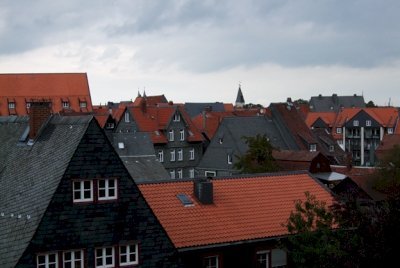
In my opinion, Goslar with Rammelsberg is the best mining site central Europe can offer, and I visited Goslar already two times. Both my visits I traveled by train from Gottingen.
What I appreciated on this site: (1) It has very compact historical core with half-timber houses, which are covered by slate tiles - not only roofs but also walls! With combination with classical roof tiles, it makes Goslar gray&red from afar, which is very delicate (PHOTO). (2) It comprises numerous valuable monumental buildings such as churches, municipal hall, imperial hall, and the remaining of the cathedral. (3) I enjoyed my visit of the former mine, where the main building is kind of iconic. I admired the big wooden wheel inside the mine, and also that the corridors were covered by white, blue, and green salts originated in dissolution of metallic ores (zinc, copper, and iron sulfides) by sulfuric acid created by oxidation of metal sulfides. (4) I enjoyed even walking around the mine on the slopes of Rammelsberg, especially at the place called Ramseck. Then I had a lunch in restaurant by Maltermeister Turm. (5) The last component - the Upper Harz water management system - I have not visited yet.
Similar WHSs such as Banská Štiavnica and Kutná Hora faded in comparison with Goslar. Only mining WHS which can be set apart from Goslar is: Erzgebirge! Erzgebirge WHS however suffers that the area is too vast and "hard to catch". Thus picking up only Freiberg and …
Keep reading 0 comments
The Goslar WHS inscription consists of 3 parts: (i) the town of Goslar, (ii) the Rammelsberg mine and (iii) the Upper Harz water management system.
GOSLAR: like Quedlinburg, Goslar is a small town full of half-timbered houses from different centuries. Highlights are the city hall's 'Huldigungssaal' (although only a replica room can be visited and the original room can only be seen from behind a plastic window), the cathedral remains (Domvorhalle) and the emperial residence (Kaiserpfalz). Also make sure to visit the St. Annenhaus, the town's oldest half-timbered house with a beautiful chapel.
RAMMELSBERG: we took two guided tours, 'Mining in the 20th Century' and 'The Roeder Gallery'. The first one is similar to other mine tours we have followed, but with the nice addition that the tour starts with a short ride in a mine train. The Roeder Gallery tour leads you to the older tunnels with a number of water wheels which supplied (water) power. If you only have limited time, we would go for the second tour since it's something different to what is being shown in other mine tours.
UPPER HARZ WATER MANAGEMENT SYSTEM: this part consists of a large number of ponds and ditches which used to power a.o. the Rammelsberg water wheels. With the Rammelsberg background in mind, it sure is interesting to see the whole water power structure but as such it is only a collection of ponds which you will probably also find in your home town/country.
We also visited the former …
Keep reading 0 comments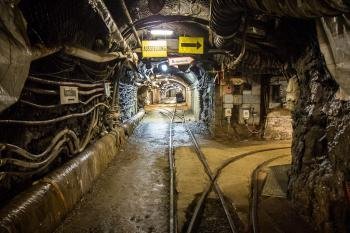
An awesome site - really interesting and quite unique. I don't know how famous it is, but I'm surprised there aren't more visitors.
While it may be a ‘museum’ these days, a visit to Rammelsberg feels more like a journey inside a recently abandoned mine – and that’s why it’s such a great experience. The underground tunnels have been maintained but not renovated or modernised for visitors. It is an authentic look inside centuries of industry.
You can only see inside the mines as part of a tour. There are different options to choose and you can combine them to get a full experience. It might start with the train journey into the heart of the mountain and then gradually you can see the different stages of the work that occurred here. There are more recent tunnels with mechanical equipment and, as you go further, there are older tunnels, clearly rough cut, where wooden systems with pulleys and swings were built to help with the process. The way that large wooden wheels used natural water flow to power operations is really quite ingenious.
Keep reading 0 comments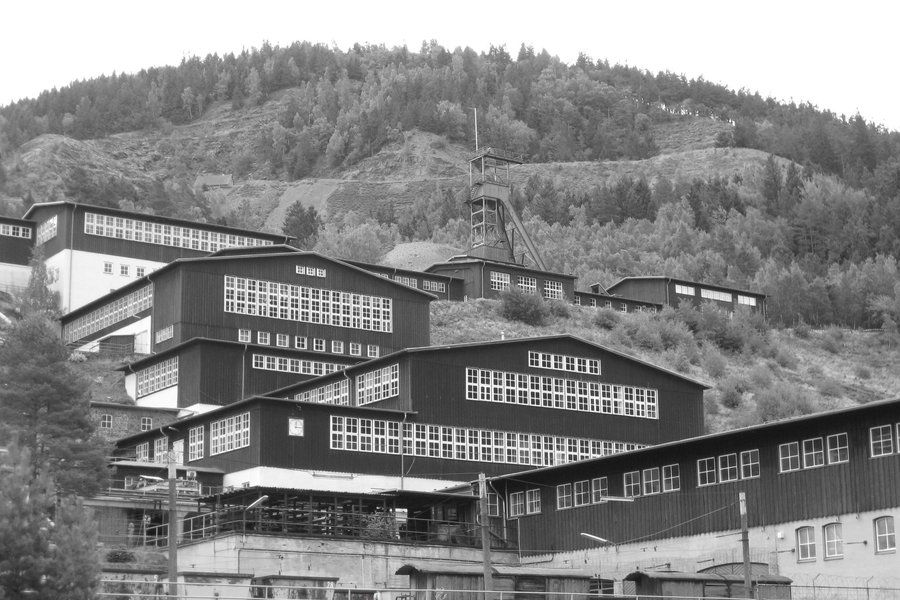
This year I visited the Harz Water Management System, which has been added to this site since my previous visit to Goslar.
I travelled from Goslar on bus #830 from Goslar station which took me to Clausthal, Zellerfeld and Hahnenklee. Here I found networks of reservoirs, culver5ts and water-wheels.
Keep reading 0 comments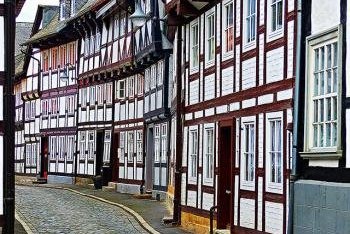
I visited this WHS in November 2014. I visited all 3 inscribed parts namely Goslar, Rammelsberg and the Upper Harz Water Management System although I only glossed over the latter part due to the freezing temperatures outside. Goslar's Historic Centre is very quaint and is a miniature version of Quedlinburg. It has several half-timbered houses one next to the other and a splendid square with an interesting restored Rathaus and a Glockspiel. I was lucky to visit Goslar when there was a special Xmas Market rated as Germany's Best Xmas Market 2014. The highlights of Goslar were the Imperial Palace, the Cathedral Porch and the Frankenberg area and church. I found this area to be the most authentic with no restaurants or shops and a really pretty fountain. In Rammelsberg, the several pine trees were already white with some snow and frost and this really created a superb setting for the huge industrial complex. The highlight in Rammelsberg though was definitely the underground visit where the temperature (12 degrees) was much warmer than outside (-3 degrees)!
Keep reading 0 comments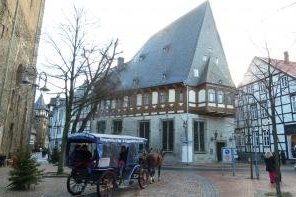
I really enjoyed Goslar, though I must admit it was approaching tipping point as its central streets filled up with large groups of tourists moving en mass between Glühwein stands.
A visit between Christmas and New Year meant that it was only possible/ practical to visit one part of this inscription, however the centre of Goslar proved to be a very worthwhile destination all by itself. The streets of half timbered buildings and grander civic edifices left no doubt as to which part of Europe you were in. My first stop was the Rathaus; its steps provided a nice overview of the stalls clustered on the main square; however the real highlight was the magnificent painted hall where council meeting used to take place. It was a real treat that I wasn’t expecting and because I wasn’t in the German language film screening, it meant I had a fair bit of time to explore it by myself from the odd glass bubble erected to protect its fragile decorations. After exiting I watched the glockenspiel, which deserves special mention for containing miners in contemporary dress, which added a nice touch to something that are normally viciously underwhelming. After nipping in for a quick Kaffee und Kuchen to escape a brief sleety shower, I ventured off to the Kaiserpfalz and again was impressed by a painted interior. This time it wasn’t a delicate medieval display of civic and religious pride, but instead a full-on Wagnerian interpretation of the myths and events around …
Keep reading 0 comments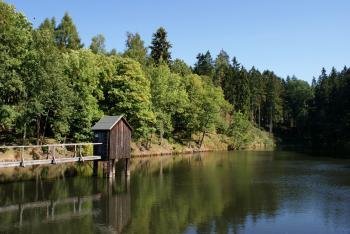
This WHS consists of three parts: the Historic Town of Goslar, the Mines of Rammelsberg and the Upper Harz Water Management. Goslar and Rammelsberg are well described by the previous reviews, so I will focus on the extension in 2010. The Upper Harz Water Management is a sophisticated water distribution system, which was used in the 16th to 19th Century by the miners to drive pumps and water wheels. A major problem for the miners was the infiltration of water into the shafts and tunnels. Hydro power was used to remove it: “raising water with water” was the principle. The first ponds and dams have been built 800 years ago by monks (Abbey Walkenried is also part of the WHS). Today, more than 60 ponds, many dams, and kilometres of ditches and water tunnels are still visible.
The area extends over about 200 square kilometres south of Goslar, most of the ponds are around the town of Clausthal-Zellerfeld. There I bought a hiking map and chose some places that seemed to be the most interesting. I was travelling by car, so it was easy to get there. In the village Bockswiese, I hiked along four ponds on different levels that were connected by historical ditches. Other nice places are the “Carler Teich” (Carl Pond, west of Zellerfeld) and the “Pfauenteiche” (Peacock Ponds, south east of Clausthal). The "Carler Teich" is one of the few ponds where the so-called “Striegelhaus” has been preserved until today (photo). These small huts were connected …
Keep reading 0 comments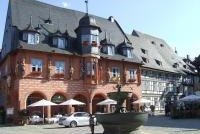
The stately medieval buildings that today surround the Market Place are testimony to the value of preserving heritage. Fortunately the town centre escaped destruction in WWII and remains pristine. Exploring beyond the Market there are other examples of fine architecture in the Schuhof, the Kaiserphalz and Stiftskapella, and in the Frankenberg district. Seeing these buildings was the highlight of my visit to Goslar, although I did take a bus up to the Rammelsberg mine and take an underground tour by train to see the workings.
Keep reading 0 comments
I have visited the Rammelsberg mining museum on several occasions. It is very interesting but there is virtually no literature about it in english. I bought two small books in german about the mine which looked interesting.
a. Historisher Rammelsberg
b. Das Rammelsberger Gold
I have translated both of them into english bafter some time and effort. The museum seems to have no interest in them whatsoever. If you would like a .pdf copy ot the translations you can have it for free! Let me know.
Keep reading 0 comments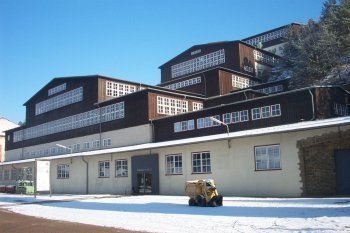
Over 1000 years of history is cumulated in this WHS, part industrial heritage, part medieval town. The numerous monuments are within walking distance from each other and make a good day trip.
Visiting mines becomes a common pastime when you're trying to tick off all WHS. Salt mines, gold mines, coal mines - they're numerous on the List. I do still enjoy visiting them. This time I joined a tour of the Roeder tunnel system at Rammelsberg. These complex underground waterways take you along two of the 19th-century water-wheels that were used as power to lift the metals above ground. As often, the confrontation with the difficult labour circumstances of the miners are the most memorable moments of an underground tour. People even had to sleep underground during the working week.
Goslar itself has a fine medieval town center with many "Fachwerkhauser". As always in Germany everything is well taken care of. The streets are almost free of motorized vehicles and provide ample possibilities for just roaming around. One of the best sights is the 12th-century antechurch of the former Stiftskapelle.
Keep reading 0 comments
For anyone remotely interested in industrial archeology or geology the Rammelsberg mine is a must-see. When you approach the site and see the array of processing buildings stretching up the mountainside it is clear this is no ordinary mine relic. It dates from the 10th century and worked with few interruptions until 1988. Many of the early features survived and it is fortunate that closure took place when the social value of such places was recognised so that everything has been preserved even the miners' clothing, each man's hanging from its own ceiling hook just as it did the day it closed.
There are a variety of tours both above and below ground all fascinating although English-speaking guides are not readily arranged nor is the detail of English-language written material really adequate. Nevertheless the language barrier does not prevent awe at such things as three enormous wooden water wheels (underground !) providing both power and drainage.
Together with the nearby town of Goslar, whose wealth was largely dependent on the mine,and walking trails based on above ground features of mining this forms an extraordinarily complete experience of an industry and its effects. Allow a whole day for a visit!
Keep reading 0 comments
